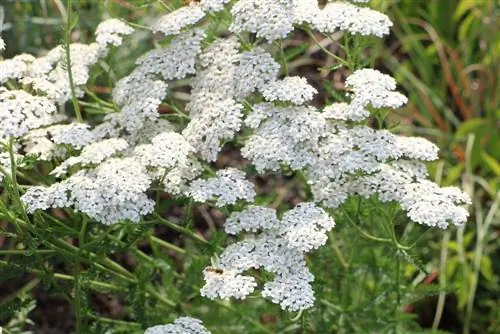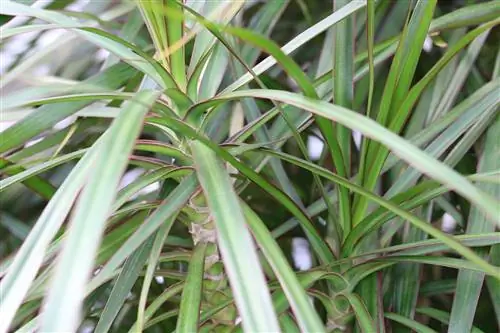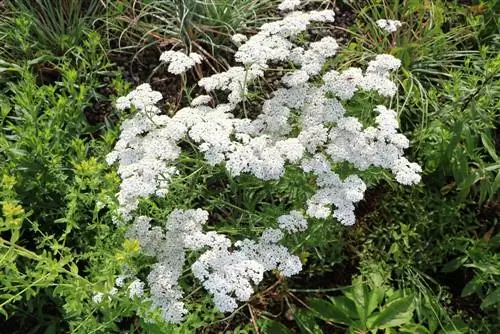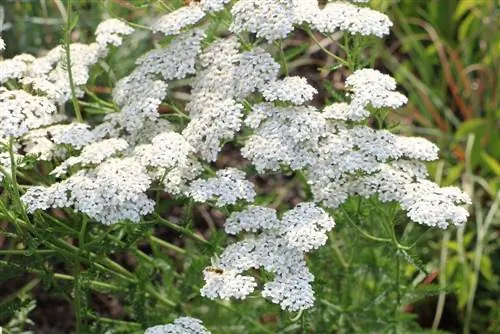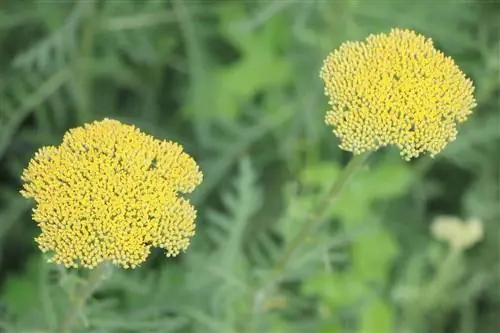- Author admin [email protected].
- Public 2023-12-17 03:39.
- Last modified 2025-01-24 12:45.
Is yarrow poisonous? Many people ask themselves this question if they, children or pets have come into contact with it or have even swallowed parts of the plant. This makes perfect sense, because the Achillea - as the yarrow is called in botanical terminology - has doubles that can lead to confusion. Anyone interested can find out what to pay attention to and when caution is advisable here.
Poisonous or non-toxic?
There is no single type of yarrow; this is just an umbrella term for plants that are very similar and closely related to one another. However, all members of the Achillea group are not poisonous. This applies to every part of the plant. Roots, stems, leaves and flowers can be touched and eaten safely.
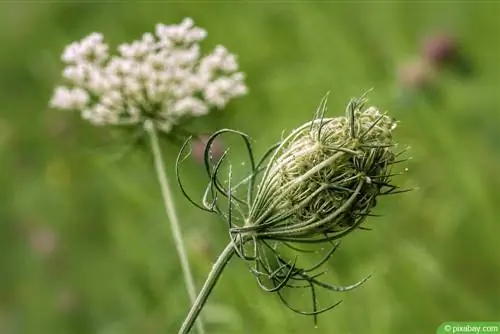
In herbal medicine, the representatives of the Achillea group are even used as medicinal herbs because they are said to have various positive properties. However, this also requires greater caution, because there are two plants that look very similar to the medicinal plants - but, unlike them, are poisonous. Anyone who wants to collect the medicinal plant and mixes it up runs the risk of poisoning themselves or others.
Identifying yarrow
The representatives of the yarrow have the following characteristics, which make them relatively easy to recognize:
- Depending on the species, it reaches heights of 30 centimeters to one meter
- the stems are slightly thickened and rigid, as well as hairy
- the small flowers sit on branched shoots and are white, yellow or light pink
- the leaves are pinnate
Tip:
To avoid confusion with other plants, it makes sense to take photos with clearly visible details of the plants to collect. Alternatively, you can also plant the plant yourself. This is easier to use anyway, as there is no risk of contamination or exposure to chemicals or exhaust fumes.
Caution: confusion
There are two plants that look very similar to Achillea and therefore pose a risk of confusion. These are the spotted hemlock (Conium maculatum) and the giant hogweed (Heracleum mantegazzianum).
Spotted Hemlock
The spotted hemlock is poisonous and can be recognized by the fact that it has reddish spots on the stems and gives off an unpleasant odor when touched. The smell is reminiscent of animal urine or ammonia. In addition, the plant grows significantly larger than the medicinal herb, reaching a height of up to two meters. Young plants still closely resemble the medicinal plant.
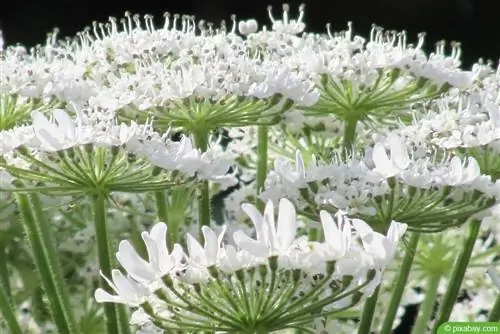
Only when the spotted hemlock is fully grown does size become a reliable distinguishing feature. If accidentally picked up, the following symptoms can occur:
- Breathing difficulties up to respiratory arrest
- Difficulty swallowing
- burning feeling on the oral mucosa
- Cramps
- Paysensations and nerve paralysis
- Muscle weakness
The plant contains toxins in all parts and is dangerous for pets such as horses, cats, dogs, rabbits and guinea pigs as well as for humans. For an adult horse, consuming just three kilograms of the plant is enough to cause life-threatening conditions or even lead to death.
The dangerous amount of spotted hemlock for smaller animals, people and especially small children is correspondingly low. Therefore, when collecting, you have to pay close attention to the differences.
Giant hogweed
Giant hogweed can also lead to similar poisoning symptoms as spotted hemlock. However, just touching it causes irritation and burn-like wounds. These are particularly severe in children and very sensitive people and can be exacerbated when exposed to UV light. In addition, they can appear on the skin for weeks and are accompanied by the following complaints and symptoms:
- Bubbles
- Pustules
- Redness
- Pain
- Swelling
Giant hogweed is an optical double of the yarrow family and can be distinguished almost exclusively by its leaves. In comparison, however, they also have significantly larger and particularly sprawling inflorescences. Since the plants cause pain and discomfort just by touching them, the resulting wounds are usually problematic and animals such as dogs, cats and horses learn comparatively quickly to stay away from giant hogweed due to the pain.
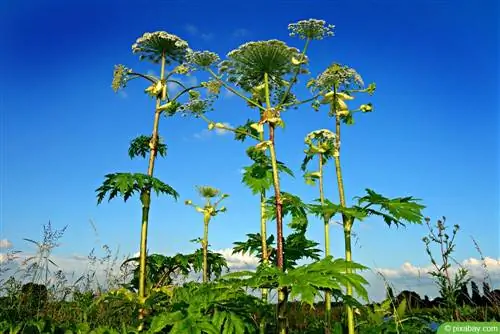
In heavily frequented areas of the garden or on horse pastures, greater care should be taken to ensure that neither children nor animals can come into contact with the plant while playing or eating.
Note:
Due to the potential damage from just touching it, gloves should be worn when removing giant hogweed. It is also important not to dispose of the plants within the reach of children or animals in order to avoid contact and ingestion.

